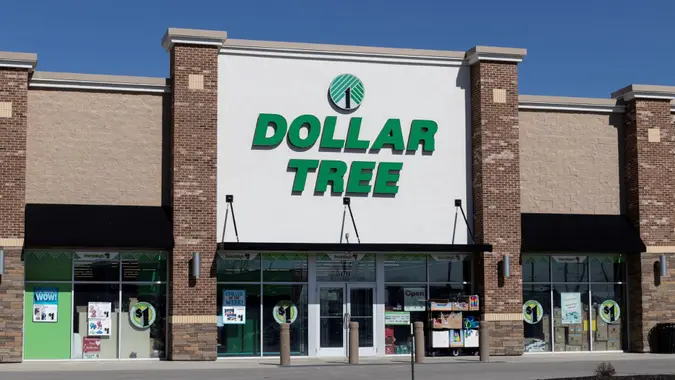3 Financial Red Flags That Your Car Is Costing More Than It’s Worth

Commitment to Our Readers
GOBankingRates' editorial team is committed to bringing you unbiased reviews and information. We use data-driven methodologies to evaluate financial products and services - our reviews and ratings are not influenced by advertisers. You can read more about our editorial guidelines and our products and services review methodology.

20 Years
Helping You Live Richer

Reviewed
by Experts

Trusted by
Millions of Readers
If you’ve had your vehicle for any period of time, there’s a chance that you feel a sense of attachment to it. With high interest rates and delivery delays, you may also not be eager to shop for a replacement ride at this point.
However, it’s critical that you don’t avoid the red flags that may indicate that your current car is costing you more than it’s worth. Here are three key signs that your current vehicle isn’t worth it for you.
Red Flag #1: Maintenance Fees Exceed Costs of Newer Vehicle
“The first red flag is that the amount that one spends in maintenance exceeds the amount that one would need to pay throughout the year to own a newer model,” said Sebastian Jania. “Even in today’s high-interest environment, there are many dealerships that will provide very favorable terms if one buys a new vehicle.”
If you’re spending far too much on maintenance and repairs on your vehicle, then it could be time to start thinking about trading it in. The maintenance fees can quickly add up without you realizing it. You could be spending more money on basic repairs than is worth keeping the vehicle on the road.
While it will cost you more money upfront to purchase a new vehicle, you’ll save in the long run. Jania added, “If it costs one way too much throughout the year in maintenance costs because they are dealing with an older vehicle, it’s important to assess the two options to be sure that one is not overspending on their older vehicle.”
How Do You Know If the Maintenance Fees Are Too Much?
“The most obvious red flag is when the cost of repairs (excluding regular maintenance) exceeds 25% of the actual vehicle’s value,” shared Matas Buzelis, an automotive expert at carVertical. “In such cases, repairing it may not be the most logical option unless there is a compelling reason to do so.”
If you run the numbers to see how much you’ve spent on repairs for your vehicle in the last year, you’ll get the answers you’re looking for. You don’t want to ignore this red flag because you’ll just end up spending more on repairs and delaying the inevitable.
Red Flag #2: Poor Fuel Efficiency
“Another red flag that a vehicle is costing one more than it’s worth is if the fuel efficiency is poor and the alternatives on the market provide much more efficient options,” commented Jania.
Even though you may think that buying a new car would be too expensive at this time, you have to consider the amount that you’re spending on fuel. If you drive for work or are a fan of road trips, poor fuel efficiency is a red flag you don’t want to ignore.
How Do You Determine If the Fuel Costs Are Too Much?
“Whether this is going from an old vehicle that guzzles a lot of gas to one that is more efficient, or perhaps even going to electric, it’s important to look at the consistent expenses and project this over time to assess where the break-even point is that would show where it makes more financial sense for a newer vehicle purchase,” Jania shared. “Further to this, there are now a number of rebates which now make the cost of a new electric vehicle even more affordable relative to an older vehicle.”
You don’t have to switch to electric, but it’s crucial that you run the calculations to see if your vehicle is costing you too much in fuel expenses. You could save yourself the hassle and spare some future costs by getting rid of that gas guzzler.
Red Flag #3: Ownership Costs Don’t Make Financial Sense
“The most recommended approach to obtain a clear answer is by conducting a ‘Total Cost of Ownership’ analysis,” commented Buzelis. “This should include the vehicle’s purchase price, maintenance and upkeep costs, fuel expenses, insurance, and potential depreciation.
When you run the numbers and determine that the ownership costs of your current car aren’t financially feasible, then it’s time to make the switch. Buzelis concluded, “Evaluating the expenses for a single year can reveal whether a particular vehicle ownership choice is financially sustainable or if it is leading to a financial strain.”
You can’t ignore the financial realities of your vehicle. If you spend too much on your current car, then it’s time to explore your options.
Closing Thoughts
You may be attached to your current vehicle, but it’s essential that you don’t dismiss these red flags. If you continue to ignore them, you will likely be frustrated with how much money you’re spending on your old car instead of upgrading your vehicle to something that rides better.
More From GOBankingRates
 Written by
Written by  Edited by
Edited by 

























